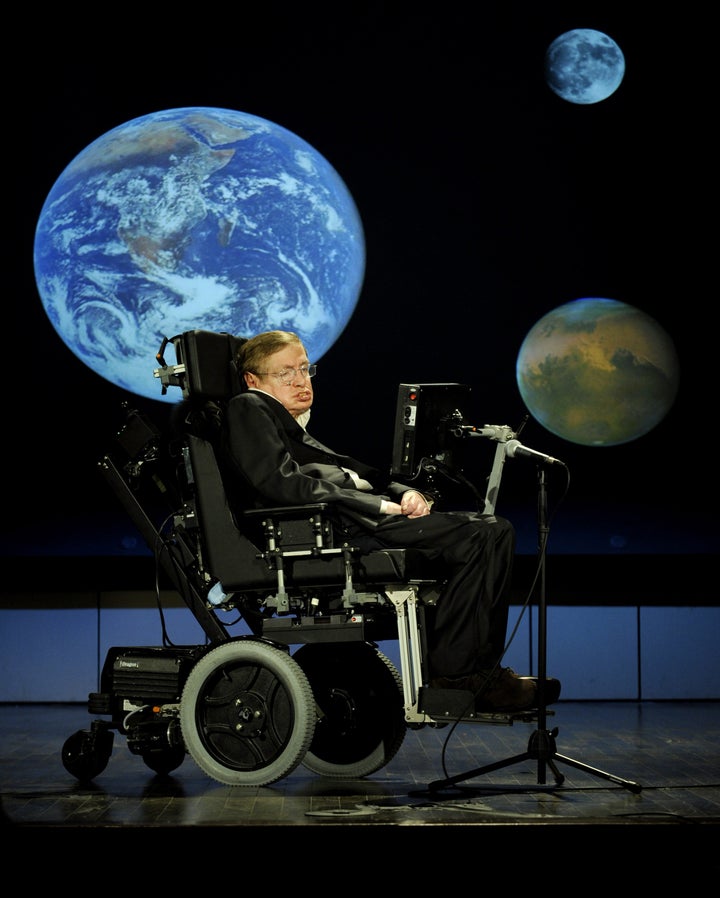
Ever wondered if--and how--you could build a time machine?
Stephen Hawking, a self-described "physicist, cosmologist and something of a dreamer," offers instructions on how to build a time machine in an article for the Daily Mail. "All you need is a wormhole, the Large Hadron Collider or a rocket that goes really, really fast," the article promises.
Hawking roots his premise in Einstein's theory of relativity, suggesting that since time moves faster in some places than others, it's quite possible to move along this "river" into the future--but not back to the past.
"I used to avoid talking about it [time travel] for fear of being labelled a crank," Hawking admits. "But these days I'm not so cautious." Indeed, he recently wrote that humans should fear aliens and likened the inter-species exchange to what happened between Christopher Columbus and the Native Americans.
Hawking even suggests what he might like to do if he were able to travel through time: "If I had a time machine I'd visit Marilyn Monroe in her prime or drop in on Galileo as he turned his telescope to the heavens," he writes. "Perhaps I'd even travel to the end of the universe to find out how our whole cosmic story ends."
In his column about time travel, Hawking describes the possibility of wormholes, the "tiny shortcuts through space and time [that] constantly form, disappear, and reform within this quantum world. And they actually link two separate places and two different times."
"Unfortunately," Hawking goes on to say,
these real-life time tunnels are just a billion-trillion-trillionths of a centimetre across. Way too small for a human to pass through - but here's where the notion of wormhole time machines is leading. Some scientists think it may be possible to capture a wormhole and enlarge it many trillions of times to make it big enough for a human or even a spaceship to enter.
Supermassive blackholes, like the one at the center of the Milky Way Galaxy, constitute a sort of wormhole, Hawking asserts. In order to pass through a wormhole, a human would need a vessel that could approach the speed of light.
It really is that simple. If we want to travel into the future, we just need to go fast. Really fast. And I think the only way we're ever likely to do that is by going into space. The fastest manned vehicle in history was Apollo 10. It reached 25,000mph. But to travel in time we'll have to go more than 2,000 times faster. And to do that we'd need a much bigger ship, a truly enormous machine. The ship would have to be big enough to carry a huge amount of fuel, enough to accelerate it to nearly the speed of light. Getting to just beneath the cosmic speed limit would require six whole years at full power.
The initial acceleration would be gentle because the ship would be so big and heavy. But gradually it would pick up speed and soon would be covering massive distances. In one week it would have reached the outer planets. After two years it would reach half-light speed and be far outside our solar system. Two years later it would be travelling at 90 per cent of the speed of light. Around 30 trillion miles away from Earth, and four years after launch, the ship would begin to travel in time. For every hour of time on the ship, two would pass on Earth. A similar situation to the spaceship that orbited the massive black hole.
After another two years of full thrust the ship would reach its top speed, 99 per cent of the speed of light. At this speed, a single day on board is a whole year of Earth time. Our ship would be truly flying into the future.
Of course, this is all theory--but it makes for interesting and thought-provoking reading. Read his entire article at Mail Online.
Check out videos of Stephen Hawking and read more about his perspective on aliens here.
